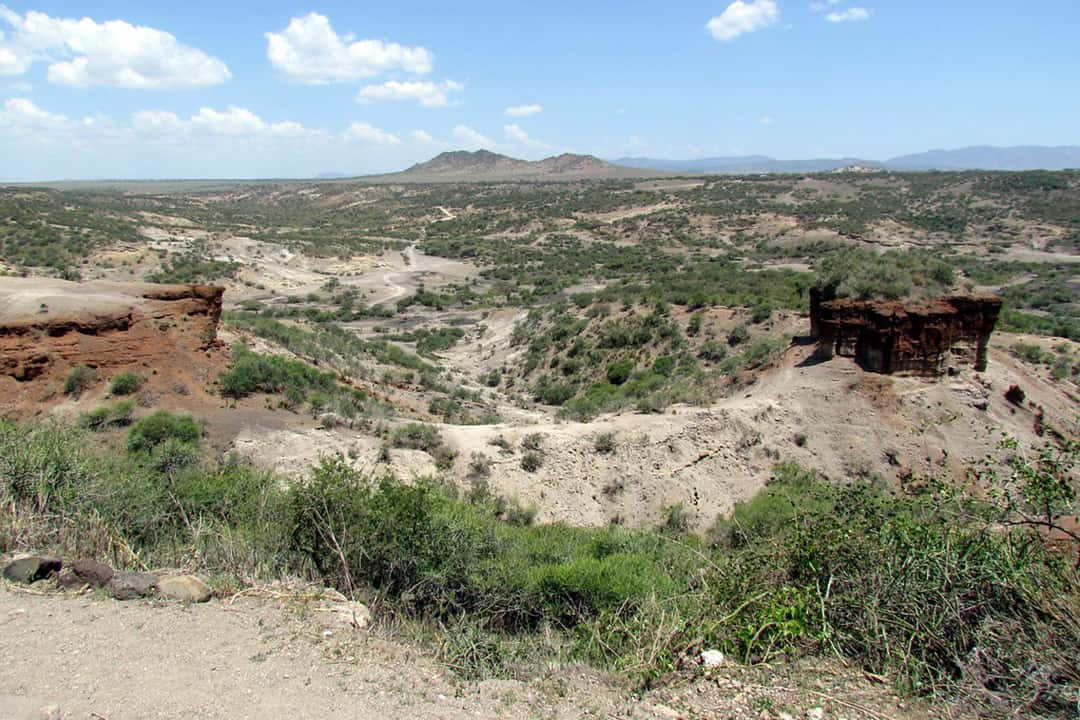Few archaeological sites can claim to be famous, but the Olduvai Gorge in northern Tanzania is chief among them. With the word ‘olduvai’ coming from a misspelling of the Maasai word, ‘oldupai,’ a name for a plant that grows in the area, the fossil-rich region is famous for offering up some of the first evidence of fossil remains and stone tools used by early hominins, ancestors of today’s humans.
In the 1930s, Louis and Mary Leakey were working in Olduvai when they uncovered stone tools from early humans. Since then, it has become a popular archaeological site. The gorge lent an even older name — the Oldoway Gorge — to the paleolithic culture discovered there before the Abbevillian culture and, subsequently, their tools. Oldowan tools are often either large hammering stones or smaller, sharper flake stones used for cutting. They were used by precursors to modern Homo sapiens, such as Homo habilis.
Now, an international research team comprised of scientists from around the world, including from U of T, have conducted a thorough search of the Olduvai Gorge and concluded that hominins were living and building tools in the site as early as two million years ago. Moreover, their continual occupation of the gorge, extending over a 235,000-year period, shows how early hominins could adapt to changing environments — a skill that might have aided in their expansion out of Eastern Africa.
A wide source of information
The researchers combed through a wide array of sources to reach their findings. They took samples from previously excavated fossils and tools and compared them against samples of pollen, plants, and charcoal from wildfires, which were all deposited into the soil millions of years ago. The result was a pattern of human activity in the same place across time.
The prehistoric Olduvai landscape contained a variety of environments, such as streams, floodplains, woody forest, dry steppe, and even patches of land covered by ash from volcanic activity. Early hominins were able to exploit all of these environments, partly by bringing materials they needed for tools with them. Some of the rocks used to make tools originated 12 kilometres from where they were found. Others were made using what was at hand.
However, it is not clear which hominin species made these tools, largely because no new fossils were found. One possible candidate is Homo habilis because their fossils have been excavated nearby.
Rethinking the past
Oldowan tools have been excavated in nearby Ethiopia dating back to 2.6 million years ago, so this study does not represent the earliest discovery of stone tools. But it does extend the timeline of the Olduvai Gorge specifically. Previously, the oldest use of tools in the region was dated to 1.85 million years ago, so these findings push that start point by about 150,000 years.
Moreover, these new findings demonstrate that early hominins had a robust ability to adapt to new environments. Julio Mercader Florin, lead author and professor at the University of Calgary, wrote in The Conversation that “This is a clear sign that 2 million years ago humans were not constrained technologically and already had the capacity to expand geographic range.”
The researchers discovered that the tools used remained the same regardless of what environment they were found in. It might have been human adaptability, then, that enabled our ancestors to thrive in the Olduvai Gorge and beyond.


